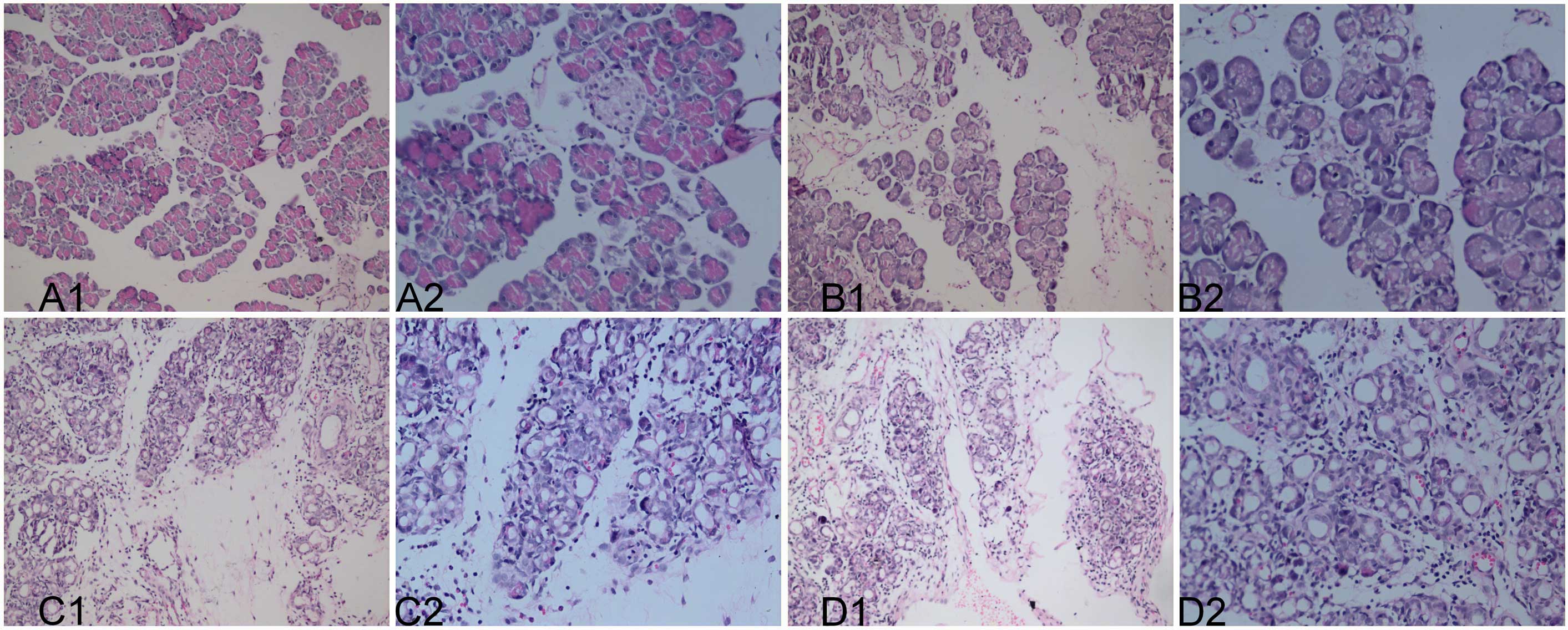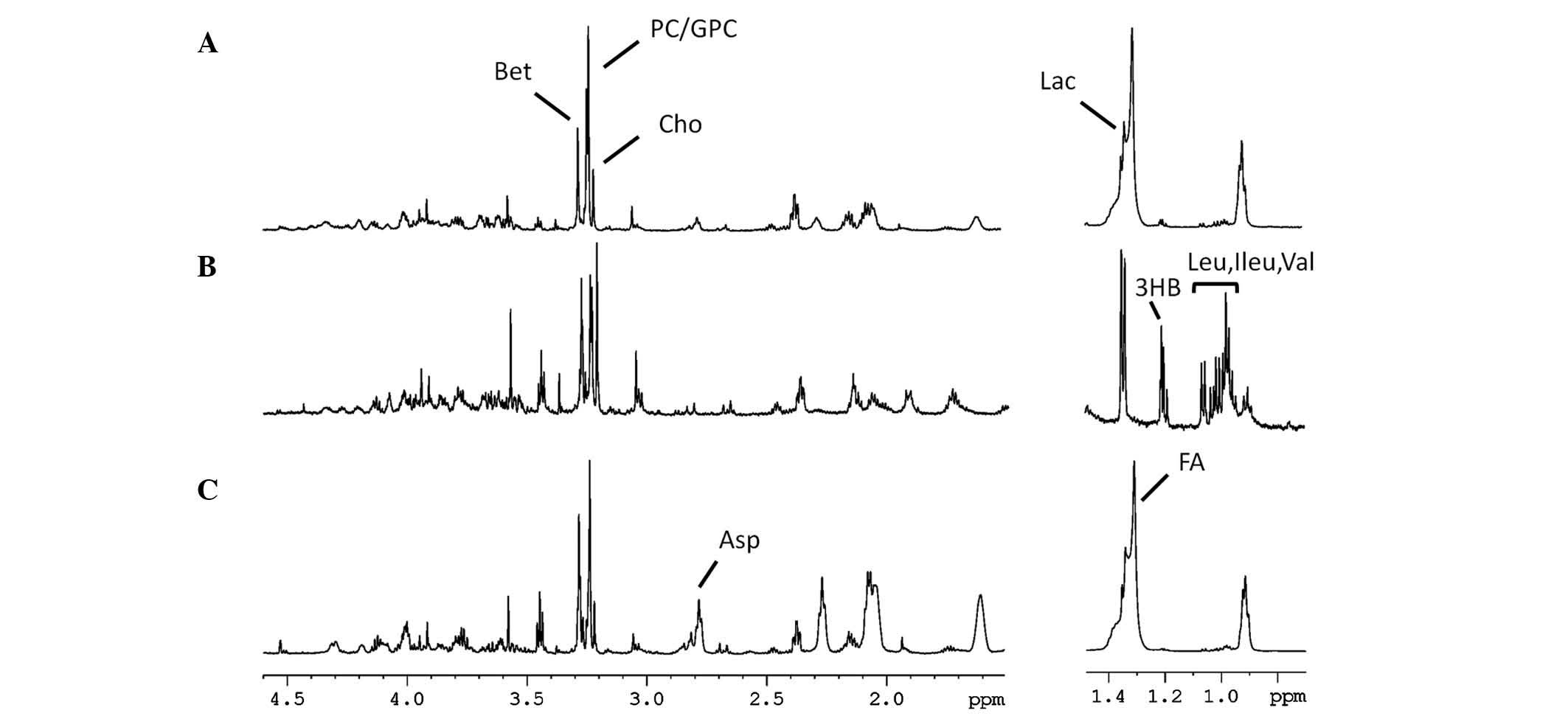Analysis of metabolic characteristics in a rat model of chronic pancreatitis using high‑resolution magic‑angle spinning nuclear magnetic resonance spectroscopy
- Authors:
- Published online on: October 22, 2014 https://doi.org/10.3892/mmr.2014.2738
- Pages: 53-58
-
Copyright: © Tian et al. This is an open access article distributed under the terms of Creative Commons Attribution License [CC BY_NC 3.0].
Metrics: Total
Views: 0 (Spandidos Publications: | PMC Statistics: )
Total PDF Downloads: 0 (Spandidos Publications: | PMC Statistics: )
Abstract
Pathological and metabolic alterations co‑exist and co‑develop in the progression of chronic pancreatitis (CP). The aim of the present study was to investigate the metabolic characteristics and disease severity of a rat model of CP in order to determine associations in the observed pathology and the metabolites of CP using high‑resolution magic‑angle spinning nuclear magnetic resonance spectroscopy (HR‑MAS NMR). Wistar rats (n=36) were randomly assigned into 6 groups (n=6 per group). CP was established by administering dibutyltin dichloride solution into the tail vein. After 0, 7, 14, 21, 28 and 35 days, the pancreatic tissues were collected for pathological scoring or for HR‑MAS NMR. Correlation analyses between the major pathological scores and the integral areas of the major metabolites were determined. The most representative metabolites, aspartate, betaine and fatty acids, were identified as possessing the greatest discriminatory significance. The Spearman's rank correlation coefficients between the pathology and metabolites of the pancreatic tissues were as follows: Betaine and fibrosis, 0.454 (P=0.044); betaine and inflammatory cell infiltration, 0.716 (P=0.0001); aspartate and fibrosis, ‑0.768 (P=0.0001); aspartate and inflammatory cell infiltration, ‑0.394 (P=0.085); fatty acid and fibrosis, ‑0.764 (P=0.0001); and fatty acid and inflammatory cell infiltration, ‑0.619 (P=0.004). The metabolite betaine positively correlated with fibrosis and inflammatory cell infiltration in CP. In addition, aspartate negatively correlated with fibrosis, but exhibited no significant correlation with inflammatory cell infiltration. Furthermore, the presence of fatty acids negatively correlated with fibrosis and inflammatory cell infiltration in CP. HR‑MAS NMR may be used to analyze metabolic characteristics in a rat model of different degrees of chronic pancreatitis.












